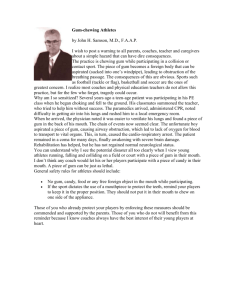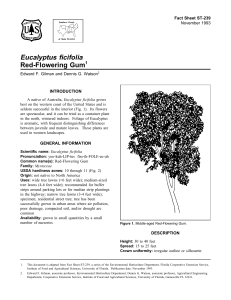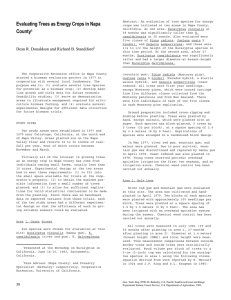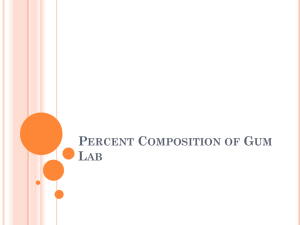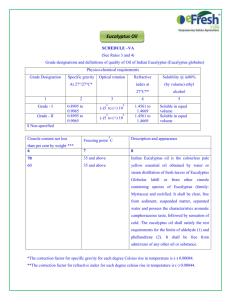Article 42 Eucalyptus sp - Botanical Society of South Africa
advertisement
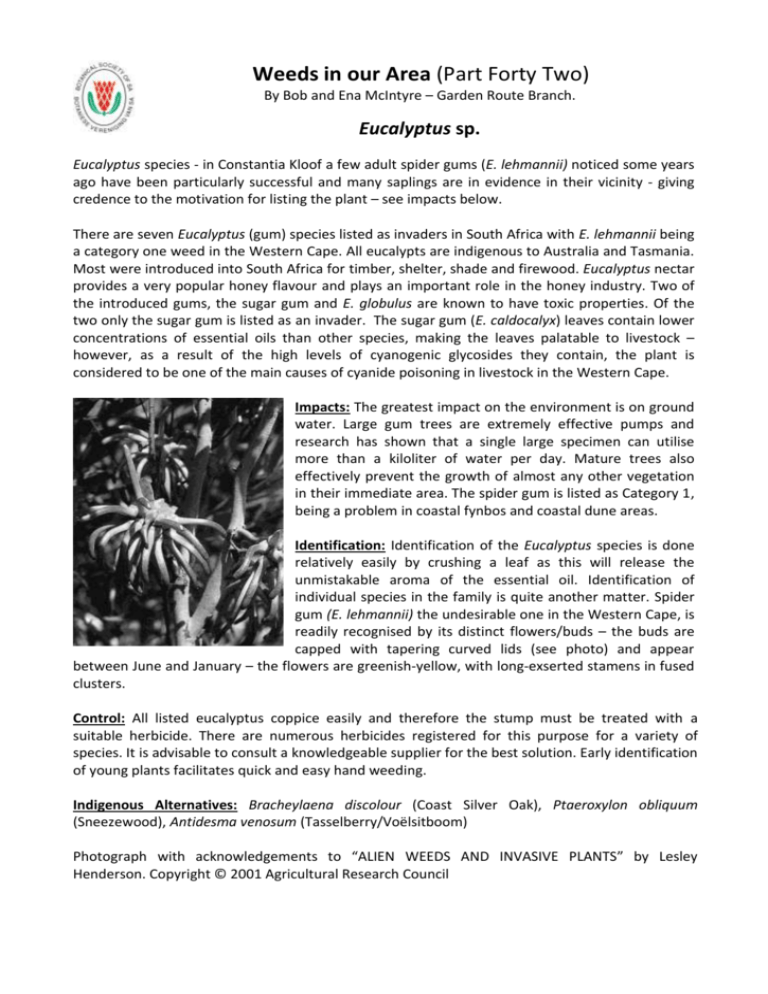
Weeds in our Area (Part Forty Two) By Bob and Ena McIntyre – Garden Route Branch. Eucalyptus sp. Eucalyptus species - in Constantia Kloof a few adult spider gums (E. lehmannii) noticed some years ago have been particularly successful and many saplings are in evidence in their vicinity - giving credence to the motivation for listing the plant – see impacts below. There are seven Eucalyptus (gum) species listed as invaders in South Africa with E. lehmannii being a category one weed in the Western Cape. All eucalypts are indigenous to Australia and Tasmania. Most were introduced into South Africa for timber, shelter, shade and firewood. Eucalyptus nectar provides a very popular honey flavour and plays an important role in the honey industry. Two of the introduced gums, the sugar gum and E. globulus are known to have toxic properties. Of the two only the sugar gum is listed as an invader. The sugar gum (E. caldocalyx) leaves contain lower concentrations of essential oils than other species, making the leaves palatable to livestock – however, as a result of the high levels of cyanogenic glycosides they contain, the plant is considered to be one of the main causes of cyanide poisoning in livestock in the Western Cape. Impacts: The greatest impact on the environment is on ground water. Large gum trees are extremely effective pumps and research has shown that a single large specimen can utilise more than a kiloliter of water per day. Mature trees also effectively prevent the growth of almost any other vegetation in their immediate area. The spider gum is listed as Category 1, being a problem in coastal fynbos and coastal dune areas. Identification: Identification of the Eucalyptus species is done relatively easily by crushing a leaf as this will release the unmistakable aroma of the essential oil. Identification of individual species in the family is quite another matter. Spider gum (E. lehmannii) the undesirable one in the Western Cape, is readily recognised by its distinct flowers/buds – the buds are capped with tapering curved lids (see photo) and appear between June and January – the flowers are greenish-yellow, with long-exserted stamens in fused clusters. Control: All listed eucalyptus coppice easily and therefore the stump must be treated with a suitable herbicide. There are numerous herbicides registered for this purpose for a variety of species. It is advisable to consult a knowledgeable supplier for the best solution. Early identification of young plants facilitates quick and easy hand weeding. Indigenous Alternatives: Bracheylaena discolour (Coast Silver Oak), Ptaeroxylon obliquum (Sneezewood), Antidesma venosum (Tasselberry/Voëlsitboom) Photograph with acknowledgements to “ALIEN WEEDS AND INVASIVE PLANTS” by Lesley Henderson. Copyright © 2001 Agricultural Research Council


